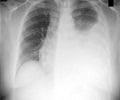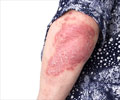Lung lesions in an individual infected with tuberculosis (TB) are surprisingly variable and independent of each other, finds study.

When the lungs become infected with Mycobacterium tuberculosis, the bacterium that causes TB, the body's immune system walls off the bacteria into lesions called granulomas, explained co-senior investigator JoAnne Flynn, Ph.D., professor of microbiology and molecular genetics, Pitt School of Medicine.
"It's long been thought that the patient with a weakened immune system or some other immune vulnerability was more likely to develop active disease," Dr. Flynn said. "But to our surprise, our study showed that every infected individual has a collection of granulomas, some containing live bacteria and some that are sterile because the immune system has killed all the bacteria. So in this sense, there's no such thing as a latent or active granuloma."
For the study, the research team infected monkeys with TB and then carefully tracked the granulomas that developed in the lungs. They determined that each granuloma starts with only one bacterium, and that bacterial replication continued for about four weeks before the body counters with an adaptive immune response to kill off the invaders.
Dr. Flynn said that this response was sufficient to kill all the bacteria and sterilize some granulomas, but bacteria persisted in others and spread to create new granulomas. You need only one granuloma to 'go bad' in order to get active TB.
Even when an animal had a severe, active infection, some of their granulomas were sterile, indicating the immune system was capable of killing bacteria, the researchers found.
Source-ANI
 MEDINDIA
MEDINDIA



 Email
Email










